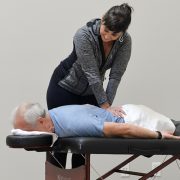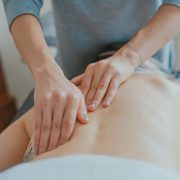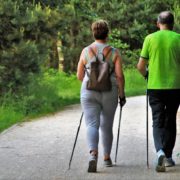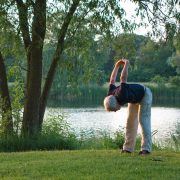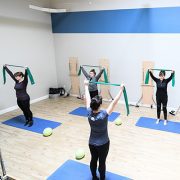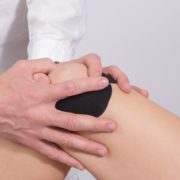Travel Plans? Avoid Neck and Back Pain on the go
We typically see an uptick in travel plans every August. But this year we’re seeing more than ever given that travel was basically non-existent for the entirety of last year.
Traveling is so good for the mind and soul – but it’s not always fun for your neck and back.
When our clients get back from a long trip, we hear common complaints of stiff necks and backs, aggravated sciatica, and just overall achiness.
The good news is you can prevent or significantly minimize most of these symptoms with just a few easy tips. Whether you’re traveling by train, plane, or automobile – here are some of my top tips for easing neck and back pain when you travel.
1. Remember the 30 min rule
The biggest strain on your body while traveling is undoubtedly the prolonged periods of sitting – often in cramped spaces. Our bodies are made to move continuously throughout the day. On road trips, or on planes and trains, getting out of your seat is critical for keeping your neck and back healthy and mobile. Motion is lotion. And one of the best things you can do for your neck and back is to interrupt any prolonged posture – especially sitting – once every 30 minutes. If you’re unable to actually stand for a few seconds, then try arching your back or stretching your arms up over your head while sitting. Do a few neck rolls and chin tucks to stretch your spine. The more you move, the better your spine is going to feel.
2. Use a lumbar roll
Our spine is made up of distinct curves for a very good reason. They are designed to balance forces and sustain shock – and it’s best if you can maintain them. When you sit, the curve in your lower back (lumbar spine) decreases, or sometimes disappears all together. While it’s perfectly acceptable to sit like this for small increments of time (remember the 30 min rule), your spine will not like this after several hours. Plus, your neck responds by changing it’s curve as well. Typically, you’ll find your neck in what we call a “forward head” posture if your lower and mid back or curved over.
One of the best things you can do is use a cylindrical lumbar roll to help maintain the natural curve in your lumbar spine. Place it right at your lower back any time you’re sitting and you’ll find that your spine has a lot less strain.
Want to purchase a lumbar roll for yourself? We have them right here in our office. Reply back to this email if you want us to put one aside for you 🙂
3. Stay hydrated
We all know that it’s important to stay hydrated, but why is it especially critical for avoiding back and neck pain during travel? Well, water is the vehicle responsible for transporting nutrients to your cells, including the nutrients your muscle cells need to do their job. Dehydration causes muscle cramps because it deprives your body of electrolytes. Proper hydration increases strength, balance, and flexibility. Water also helps to lubricate your joints, which is a bonus for keeping your spine working smoothly and allowing it to support the movements of your entire body. So, if you’re planning to hit the road soon, make sure you bring a reusable water bottle and fill it up regularly. And the extra bathroom breaks will give you an excuse to stay moving!
4. Pack light
No matter where you’re going or how you’re getting there, traveling involves packing, and packing too much stuff can be a quick recipe for back pain. Anyone who has flown knows that lugging multiple bags and/or suitcases around an airport is not only exhausting and stressful but can leave you sore and unbalanced for days. Even if you’re traveling by car, you still have to load and unload your bags, and carry them to wherever you’re staying. Your best bet is to pack light. If you’re bringing a suitcase with wheels, pack heavier items in there so that you don’t put unnecessary strain on your neck and shoulders. Opt for a backpack instead of an over-the-shoulder bag to avoid uneven distribution of pressure, and stock it with your water bottle, small travel essentials, and healthy snacks.
5. Prepare your body
The best way to prevent injury or pain (in general) is to stay as mobile as you can and maintain an active lifestyle. Oftentimes when you travel, you are walking more than usual and doing more activities than you are accustomed to when you’re home. If you’ve got an active trip planned, it’s best to prepare your body beforehand. Something else to consider is your sleeping surface. Different mattresses and sleeping surfaces can really wreak havoc on your neck and back. It’s a good idea to bring your favorite pillow with you, and plan to use extra blankets or clothing items to provide extra cushioning or support where you need it. Whatever you can do to simulate what it’s like to sleep at home is going to help minimize neck and back stiffness.
I hope at least one of these tips helps you to have less back and neck pain on your next travel excursion.
Need more tips?
CLICK HERE – to talk to one of my specialists for free if you’re currently looking for help with neck and back pain right now.


